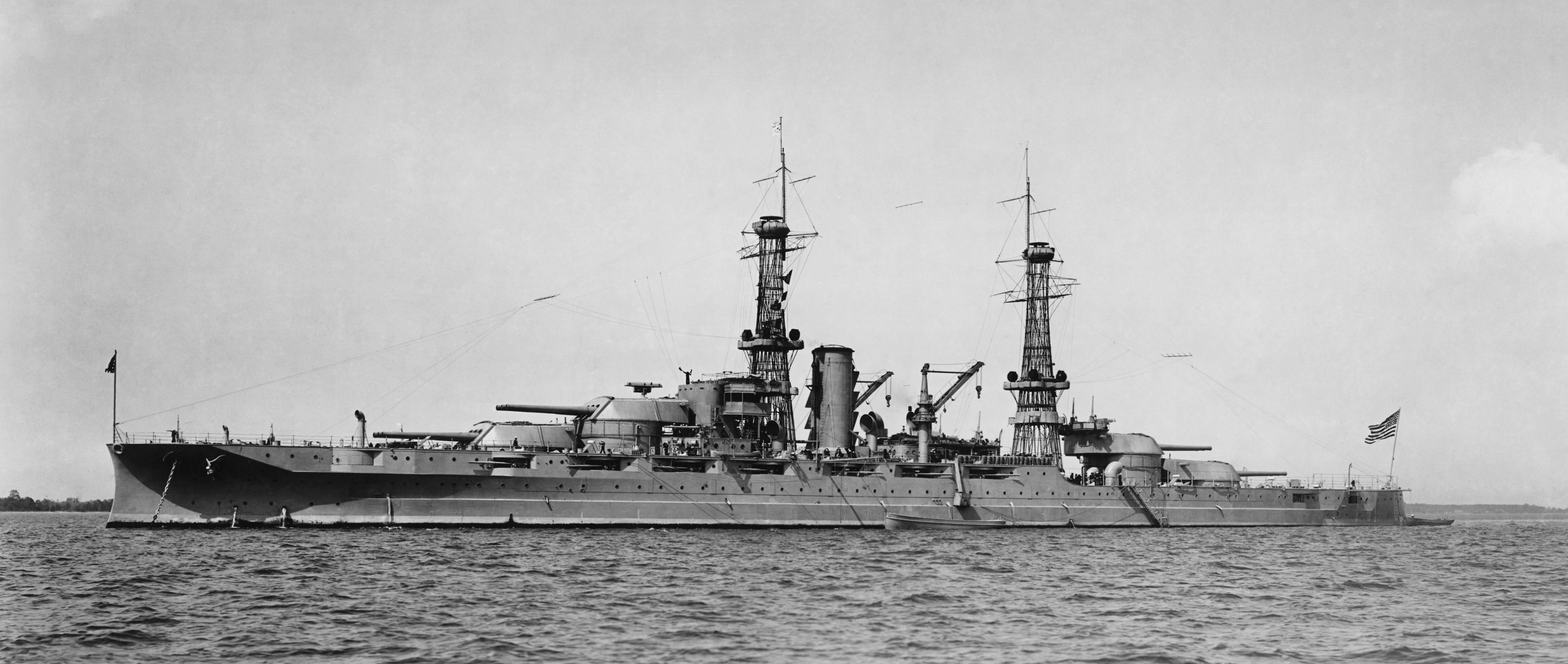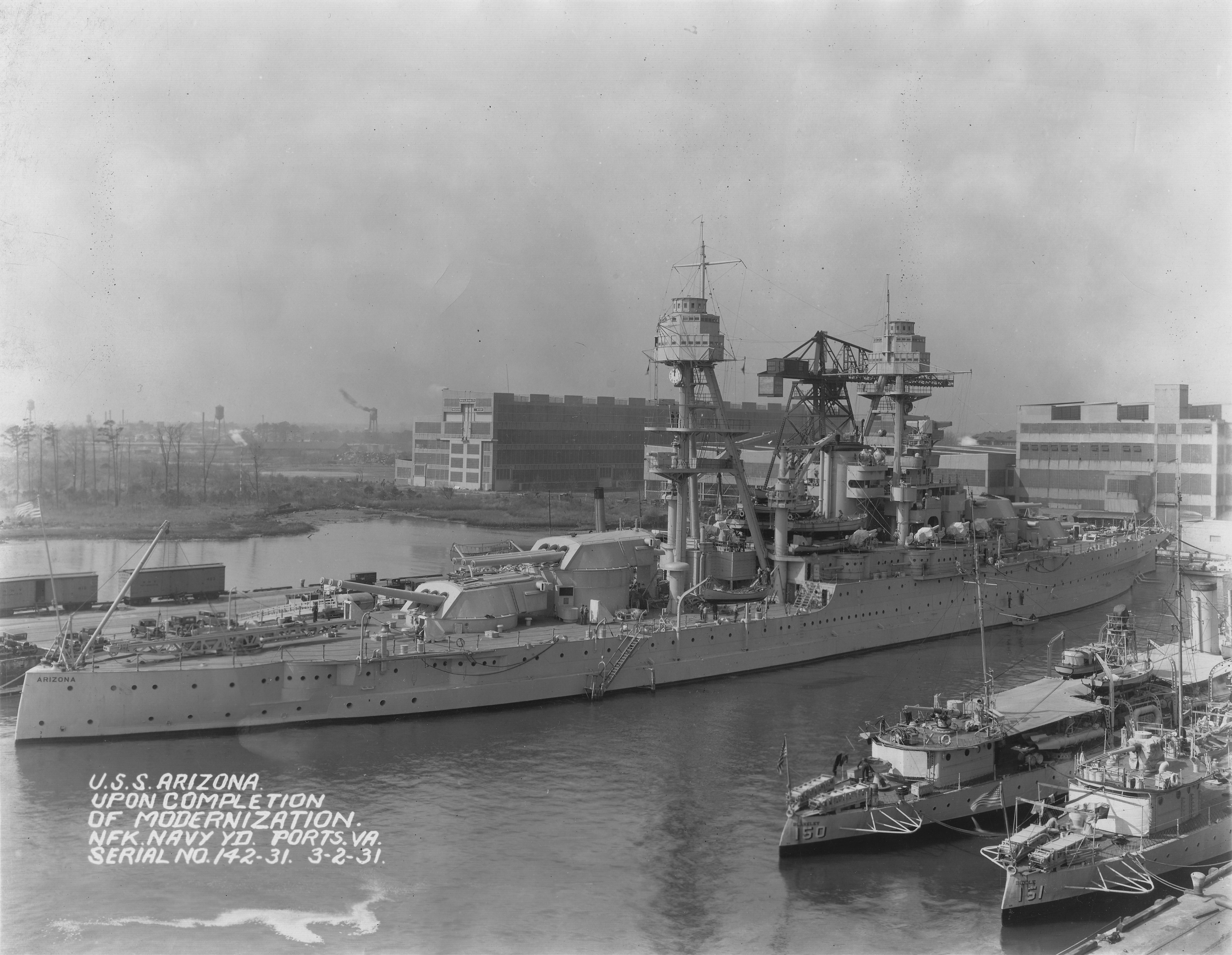Tripod mast on:
[Wikipedia]
[Google]
[Amazon]
 The tripod mast is a type of mast used on warships from the
The tripod mast is a type of mast used on warships from the

 The
The
Edwardian era
The Edwardian era or Edwardian period of British history spanned the reign of King Edward VII, 1901 to 1910 and is sometimes extended to the start of the First World War. The death of Queen Victoria in January 1901 marked the end of the Victor ...
onwards, replacing the pole mast. Tripod masts are distinctive using two large (usually cylindrical) support columns spread out at angles to brace another (usually vertical) column.
History
The masts were intended to provide a raised platform for visual observers and for fire control equipment, elevated up above the main hull for visibility and to reduce the risk of shell damage to the gear and crews. These masts used three large cylindrical tubes or columns to form the mast. The tubes provided structural cross-bracing and a stiff structure, but were still structurally efficient and reasonably lightweight. Tripod masts were predated by pole masts. The idea dates at least as far back as the French s, built in the late 1870s, which used a pair of tripod masts. TheRoyal Navy
The Royal Navy (RN) is the United Kingdom's naval warfare force. Although warships were used by English and Scottish kings from the early medieval period, the first major maritime engagements were fought in the Hundred Years' War against ...
moved to the tripod mast from pole masts with their last pre-dreadnought
Pre-dreadnought battleships were sea-going battleships built between the mid- to late- 1880s and 1905, before the launch of in 1906. The pre-dreadnought ships replaced the ironclad battleships of the 1870s and 1880s. Built from steel, protec ...
( ''Lord Nelson'' class) and the first dreadnought battleship
The dreadnought (alternatively spelled dreadnaught) was the predominant type of battleship in the early 20th century. The first of the kind, the Royal Navy's , had such an impact when launched in 1906 that similar battleships built after her ...
, HMS ''Dreadnought'' (launched in 1906) and thereafter in their later battleships and battlecruisers.

 The
The United States Navy
The United States Navy (USN) is the maritime service branch of the United States Armed Forces and one of the eight uniformed services of the United States. It is the largest and most powerful navy in the world, with the estimated tonnage ...
preferred the lightweight lattice mast
Lattice masts, or cage masts, or basket masts, are a type of observation mast common on United States Navy major warships in the early 20th century. They are a type of hyperboloid structure, whose weight-saving design was invented by the Russian ...
, which used an array of thin columns at angles, crossing each other in a double helical spiral configuration in a form of hyperboloid structure
Hyperboloid structures are architectural structures designed using a hyperboloid in one sheet. Often these are tall structures, such as towers, where the hyperboloid geometry's structural strength is used to support an object high above the grou ...
. These were used on their first dreadnought battleships launched in 1908. The US were the only significant users of lattice masts. Eventually, these structures proved less structurally sound than intended. On January 15, 1918, had a lattice mast collapse in an intense storm.
Beginning in the 1930s, the US Navy started refitting their battleships and other capital ships with the more robust tripod mast design.
The tripod mast structure, continued in use until stealth designs started to move away from open masts entirely in the 2000s. The Royal Navy began using plated-in masts or "macks" in the early 1960s, either as new construction or by refit, such as that of in 1962.Marriott, Leo, ''Royal Navy Frigates, 1945-1983'', Ian Allan Ltd., p.50
See also
*Pagoda mast
A pagoda mast was a type of superstructure erected on a tripod mast that was common on Japanese capital ships that were reconstructed during the 1930s in a bid to improve their fighting performance. These modifications were deemed to be necessar ...
References
{{reflist Watercraft components Nautical terminology